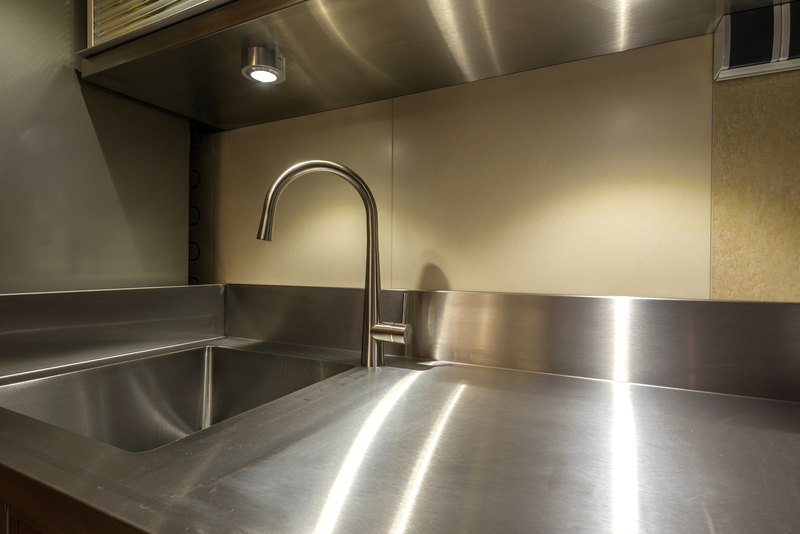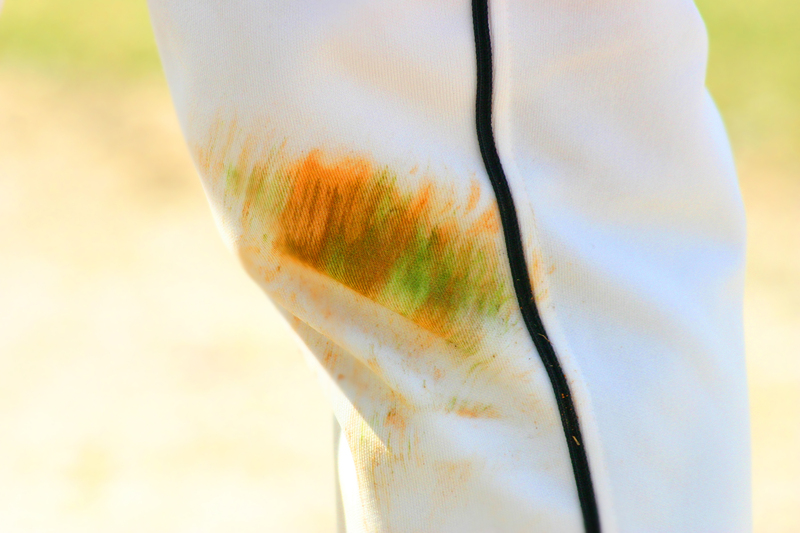Revitalize Your Home: Destroy Damp Odors
Posted on 08/06/2025
Revitalize Your Home: Destroy Damp Odors
If you've ever walked into your home and been greeted by a musty, unpleasant scent, you know the frustration of dealing with damp odors. These pesky smells can permeate every corner of your living space, making it feel less inviting and even compromising your health. Revitalizing your home by destroying damp odors is essential for comfort, wellness, and peace of mind. This comprehensive guide explores practical solutions, preventative strategies, and expert tips to ensure your home smells clean and fresh all year round.
The Science Behind Damp Odors
Before you can eliminate damp odor from your home, it's crucial to understand what causes it. Damp, musty smells are typically the result of:
- Mold and mildew growth in moist environments
- Poor ventilation and air circulation
- Trapped humidity in walls, carpets, or upholstery
- Water leaks or past flooding incidents
Mold and mildew thrive in environments where moisture is abundant and airflow is restricted. The resulting "damp odor" is actually the volatile organic compounds released by these microorganisms as they grow and spread.

Signs Your Home Has a Damp Odor Problem
Dampness isn't just about what you can smell. Look out for these warning signs to nip the problem in the bud:
- Persistent musty smells in certain rooms
- Visible mold spots on walls, ceilings, or floors
- Peeling wallpaper or bubbling paint
- Stale air and frequent condensation on windows
- Frequent allergies or respiratory irritation
If you notice one or more of these symptoms, it's time to take action to destroy damp odors at their source.
Step 1: Identify and Fix Moisture Sources
The first and most important step in revitalizing your home and ridding it of damp smells is to identify and address sources of moisture. Here's how to get started:
Inspect for Leaks
- Check under sinks, around toilets, and behind appliances for dripping water.
- Inspect your roof, basement, and windows for signs of water ingress.
- Seal any cracks and repair faulty pipes or roof tiles immediately.
Control Indoor Humidity
- Use a hygrometer to monitor indoor humidity levels--ideally, keep them between 30%-50%.
- Invest in a dehumidifier for damp-prone areas like basements and laundry rooms.
- Utilize exhaust fans in the bathroom and kitchen to reduce steam buildup.
Step 2: Deep Clean Problem Areas
Once you've dealt with the root causes, it's time to clean thoroughly to eliminate musty odor remnants and discourage regrowth.
Wash Fabrics and Soft Furnishings
- Launder curtains, cushion covers, and bedding in hot water with added vinegar to kill odor-causing microbes.
- Shampoo carpets and upholstered furniture, focusing on any stains or spots.
Clean Hard Surfaces
- Scrub walls, floors, and tiles with a mix of water, white vinegar, and baking soda, which neutralizes damp odors naturally.
- Pay special attention to tile grout, window sills, and baseboards where mold likes to gather.
Step 3: Improve Airflow Throughout Your Home
Stale, stagnant air allows damp odors to linger. Boost ventilation to promote a fresh, inviting environment:
- Open windows daily to allow air exchange, even in winter for a short time.
- Arrange furniture to maximize airflow and remove items blocking vents or radiators.
- Install ceiling fans or use portable fans in stuffy rooms to keep air moving.
- Add indoor plants like peace lilies or spider plants--they act as natural air purifiers.
Effective ventilation not only helps destroy damp odor, but it also prevents future buildups of humidity and contaminants.
Step 4: Neutralize Lingering Smells
Even after cleaning and ventilating, some odors can persist deep within surfaces. Try these powerful odor neutralizers:
Baking Soda and Activated Charcoal
- Place open boxes of baking soda or bowls of activated charcoal in cabinets, closets, and near damp spots to absorb smells.
Vinegar and Essential Oils
- Set out bowls of white vinegar overnight to trap airborne odor particles.
- Add a few drops of essential oils like tea tree, lavender, or eucalyptus for natural fragrance and antimicrobial effects.
Commercial Odor Eliminators
- Choose enzymatic sprays designed for mold and mildew; these break down the compounds responsible for bad odors.
- Be sure to follow instructions carefully and always test on a hidden area.
Step 5: Prevent Damp Odors from Returning
Long-term freshness requires ongoing attention. Use these strategies to safeguard your home against future damp odor problems:
- Maintain good drainage around the house and keep gutters clear.
- Act quickly to dry out spills, leaks, or floods before mold has a chance to take hold.
- Store items in airtight plastic containers, not cardboard boxes which retain moisture.
- Consider using moisture-absorbing crystals or bags in wardrobes, cabinets, and under sinks.
- Have your HVAC system and ductwork regularly cleaned and serviced.
Routine cleaning and vigilance are your best defense against unwelcome odors.
Additional Tips for Specific Areas
Basement
- Keep the floor clear of clutter to encourage airflow.
- Check for cracks in the foundation; seal as needed.
- Consider professional waterproofing if flooding or persistent damp is a problem.
Bathroom
- Always run the exhaust fan during and after showers.
- Wipe down tiles and shower curtains regularly to prevent mildew buildup.
Kitchen
- Empty garbage and compost bins frequently.
- Check under the sink for leaks and keep the area dry.
- Clean behind appliances to avoid trapped moisture and food debris.
Natural Solutions to Manage Humidity and Destroy Damp Smells
If you prefer eco-friendly or DIY solutions for damp odors, there are plenty of earth-conscious methods to try:
- Salt: Place bowls of rock salt in rooms--it naturally pulls moisture from the air.
- Cedarwood: Use cedar blocks in closets and shoe racks to absorb dampness and impart a pleasant aroma.
- Houseplants: In addition to improving air quality, some plants help regulate humidity.
- Lemon peels: Place fresh lemon peels in problem areas for a burst of natural freshness.
How Damp Odors Affect Your Health and Wellbeing
Ignoring musty smells isn't just a cosmetic issue -- prolonged exposure to damp environments can impact health, especially for those with allergies or asthma. Mold spores and mildew trigger:
- Chronic coughing, sneezing, or throat irritation
- Worsened asthma or allergic reactions
- Fatigue or headaches due to poor indoor air quality
- Potential long-term respiratory issues
This is why it's critical to eradicate sources of damp odor and keep your home fresh and healthy for your family.
Revitalize Your Senses: Bonus Tips for a Fresh-Smelling Home
- Simmer herbs and citrus peels on the stove for an instant air freshener.
- Regularly wash pet beds and clean their corners to keep animal odors at bay.
- Leave a few cotton balls soaked in vanilla extract on shelves for a sweet hint of fragrance.
- Make homemade sachets by filling breathable bags with dried lavender, rose petals, or baking soda.
- Remember to clean air conditioning filters every few months.

When to Seek Professional Help
Sometimes, persistent damp smells require a professional. If you notice extensive mold patches, recurring damp spots despite your best efforts, or health symptoms that don't improve, call in a certified mold remediation specialist. Professionals have the expertise and equipment to safely remove mold colonies and restore your home's air quality.
Conclusion: Enjoy a Fresh, Inviting Home
Revitalizing your home to remove damp odors is a rewarding process that enhances comfort, supports wellbeing, and protects your property investment. By understanding the causes of musty smells, taking swift action to address moisture, and adopting both ongoing prevention and smart cleaning techniques, you can destroy damp odors at the source and enjoy a space that smells as good as it looks. Say goodbye to mustiness, and hello to a truly fresh living environment!
Ready to breathe easier and love your home again? Start with these steps today and experience how simple changes can make a world of difference. For more tips on keeping your home revitalized and odor-free, be sure to explore our related articles!




